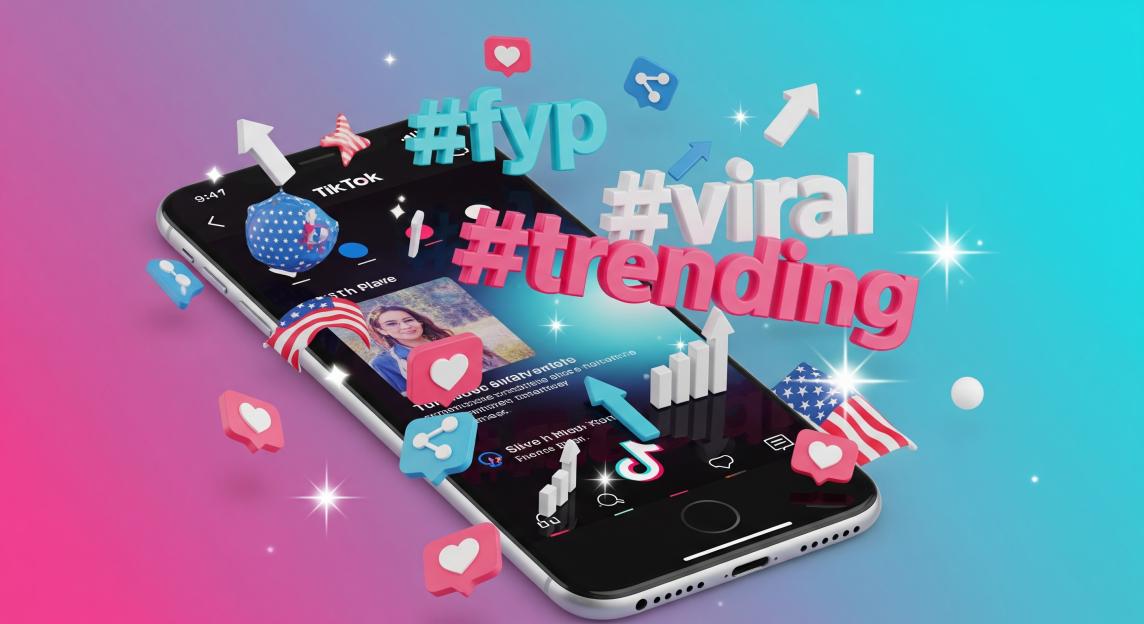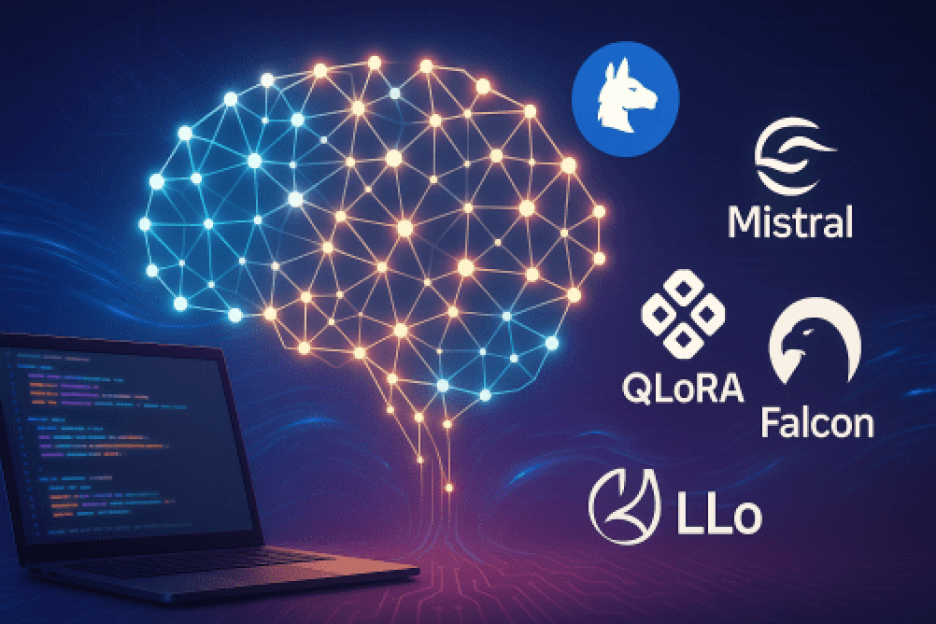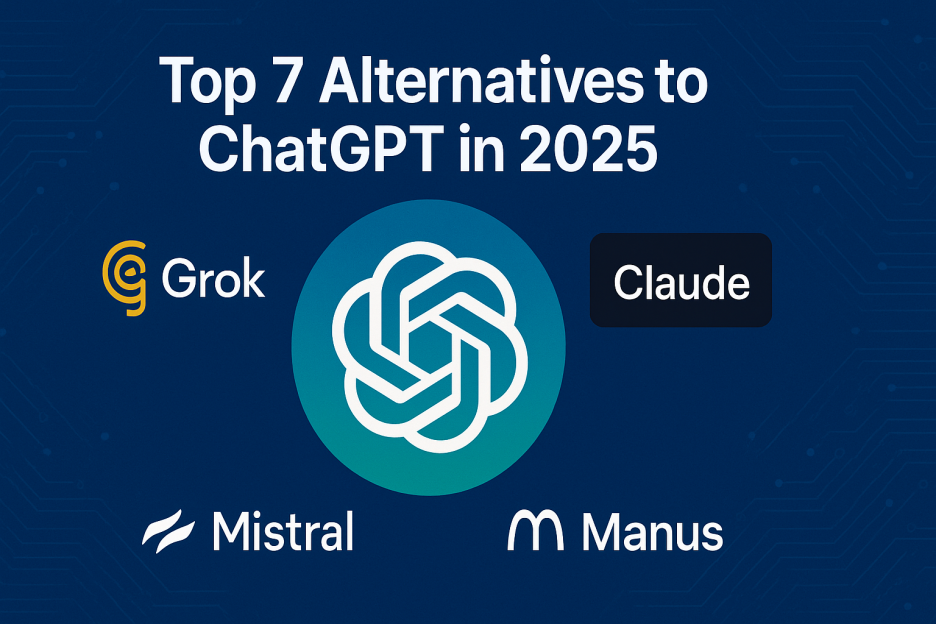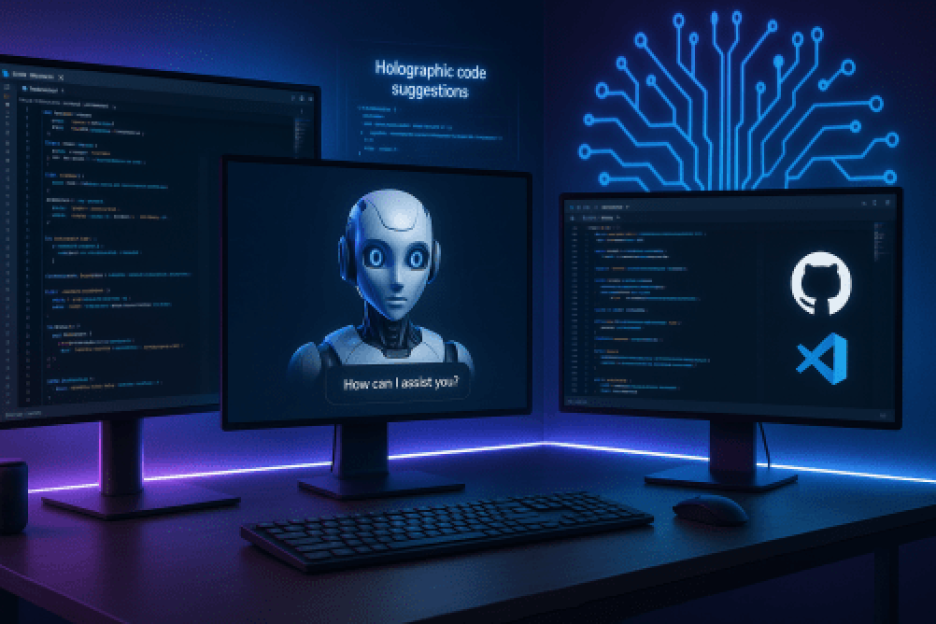Table of Contents
- Introduction: The AI Search Revolution
- What is LLM Seeding? A Deep Dive
- The Science Behind LLM Content Selection
- 7 Proven LLM Seeding Strategies
- Content Formats That Win AI Citations
- Platform-Specific Optimization Guide
- Measuring LLM Seeding Success
- Common Mistakes and How to Avoid Them
- Tools and Resources
- Future Trends and Predictions
- Conclusion and Action Plan
- Frequently Asked Questions
The AI Search Revolution
The digital landscape is experiencing a seismic shift. According to recent data from Adobe Analytics, generative AI traffic has skyrocketed by an astounding 1,200% between July 2024 and February 2025. This isn’t just another tech trend-it’s a fundamental transformation in how people discover and consume information online.
Consider these eye-opening statistics:
- 52% of U.S. adults now use AI chatbots for search or assistance
- ChatGPT processes over 1 billion user messages daily in 2024
- Google’s search market share dropped below 90% for the first time since 2015
- Gartner predicts 50% of search engine traffic will shift to AI by 2028
- Almost 90% of ChatGPT citations come from pages ranking 21+ on Google
These numbers tell a clear story: traditional SEO alone is no longer sufficient. Enter LLM Seeding-a revolutionary approach that positions your brand within AI-generated responses, ensuring visibility in an increasingly zero-click world.
What is LLM Seeding? A Deep Dive
Definition and Core Concepts
LLM Seeding is the strategic practice of creating and placing content in formats and locations that Large Language Models (LLMs) are most likely to scrape, process, understand, and cite when generating responses. Unlike traditional SEO, which focuses on ranking in search engine results pages (SERPs), LLM seeding optimizes for citations and mentions within AI-generated content.
The Fundamental Shift: From Clicks to Citations
Traditional SEO metrics like click-through rates and page rankings are becoming less relevant as AI tools provide direct answers without requiring users to visit websites. This shift demands a new approach:
Traditional SEO Focus:
- Keyword rankings
- Backlink building
- Click-through rates
- Page load speed
- Mobile optimization
LLM Seeding Focus:
- Citation worthiness
- Semantic clarity
- Structured information
- Entity recognition
- Contextual relevance
How LLM Seeding Works: The Technical Framework
When an LLM processes a query, it follows this sequence:
- Query Analysis: The model interprets user intent using natural language processing
- Document Retrieval: It searches for relevant content from training data or real-time sources
- Relevance Ranking: Content is evaluated based on accuracy, authority, and relevance
- Answer Generation: The model constructs a response using the most credible sources
- Source Attribution: Citations or references are included where applicable
Understanding this process is crucial for optimizing your content effectively.
The Science Behind LLM Content Selection
Training Data and Knowledge Cutoffs
Most LLMs operate on specific knowledge cutoffs:
- GPT-4: Training data up to April 2023 (with web browsing for current info)
- Claude 3.5: Knowledge cutoff of April 2024
- Perplexity: Real-time web access with RAG (Retrieval Augmented Generation)
This temporal limitation creates opportunities for brands that understand how to position content within these training windows and through real-time retrieval systems.
Entity Recognition and Topic Clustering
LLMs organize information through sophisticated entity recognition and topic clustering. For example, a fitness equipment brand becomes associated with:
- Home exercise equipment
- Workout routines
- Health and wellness
- Product comparisons
- User reviews and experiences
These associations strengthen through repeated mentions across authoritative sources, making consistent brand messaging crucial.
Authority Signals That Matter to LLMs
Research from a Princeton study on Generative Engine Optimization (GEO) revealed that LLMs prioritize:
- Statistical Evidence: Content with verifiable data sees 30-40% higher citation rates
- Expert Attribution: Quotes from recognized authorities increase trustworthiness
- Structural Clarity: Well-organized content with clear hierarchies
- Factual Accuracy: Consistency with established knowledge bases
- Source Credibility: Citations from recognized institutions
7 Proven LLM Seeding Strategies
1. Create AI-Optimized Content Structures
LLMs excel at parsing structured content. Implement these formats:
Comparison Tables: Create comprehensive tables comparing products, services, or concepts
| Feature | Product A | Product B | Product C | |---------|-----------|-----------|-----------| | Price | $99 | $149 | $199 | | Key Benefit | Beginner-friendly | Professional features | Enterprise-ready | | User Rating | 4.5/5 | 4.7/5 | 4.9/5 | FAQ Sections: Structure questions and answers clearly
- Use schema markup for FAQ content
- Keep answers concise (40-60 words for featured snippets)
- Address specific user intents
Numbered Lists: Present information hierarchically
- Primary concept with explanation
- Supporting detail
- Additional context
- Secondary concept with data
2. Optimize for Semantic Search and Natural Language
Modern LLMs process conversational queries differently than keyword-based searches. Adapt your content:
Before (Keyword-focused): “Best CRM software 2025 reviews comparison features pricing”
After (Conversational): “What’s the best CRM software for small businesses with limited budgets in 2025?”
Include natural language variations and answer questions the way people actually ask them.
3. Build Entity Authority Through Strategic Citations
Establish your brand as an authoritative entity:
- Publish original research with verifiable statistics
- Collaborate with recognized experts in your field
- Obtain mentions from authoritative publications
- Create comprehensive resource hubs
- Maintain consistency across all brand mentions
4. Leverage High-Authority Publishing Platforms
LLMs frequently reference content from specific platforms:
Tier 1 Platforms (Highest Citation Rate):
- Reddit (most cited platform according to Semrush)
- Wikipedia (for established brands/topics)
- Academic journals and research papers
- Government websites
- Major news publications
Tier 2 Platforms (Strong Citation Potential):
- Quora (top source for Google AI Overviews)
- Medium (clean format, high authority)
- LinkedIn (professional content)
- Industry-specific forums
- Stack Overflow (for technical content)
5. Implement Structured Data and Schema Markup
While LLMs don’t directly read schema markup like search engines, structured data improves content clarity:
{ "@context": "https://schema.org", "@type": "FAQPage", "mainEntity": [{ "@type": "Question", "name": "What is LLM Seeding?", "acceptedAnswer": { "@type": "Answer", "text": "LLM Seeding is the practice of optimizing content for Large Language Model citations..." } }] } 6. Create Content Depth Through Topic Clusters
Build comprehensive topic coverage:
- Pillar Content: Comprehensive guides (3000+ words)
- Supporting Articles: Detailed subtopic exploration
- Comparison Posts: Product/service comparisons
- Case Studies: Real-world implementations
- Expert Interviews: Industry leader insights
7. Optimize for Multi-Modal Content
As LLMs evolve to process various content types:
- Add descriptive alt text to images
- Create infographics with embedded text
- Use tables and charts with clear labels
- Include video transcripts
- Provide audio content summaries
Content Formats That Win AI Citations
The “Best Of” Framework
Structure comparison content for maximum impact:
# Best [Product Category] for [Specific Use Case] in 2025 ## Quick Answer: [Direct 40-60 word answer with top 3 recommendations] ## Detailed Comparison: [Comprehensive table with 5-7 options] ## When to Choose Each Option: [Specific scenarios with bullet points] ## Expert Insights: [Quotes from industry authorities] ## Methodology: [How products were evaluated] ## FAQs: [Common questions with concise answers] Statistical Content That Gets Cited
Original research garners 40% more AI citations. Focus on:
- Survey results with significant sample sizes
- Industry benchmarks and trends
- Comparative analysis with clear methodology
- Year-over-year growth statistics
- Market size and projection data
Example: “According to our survey of 1,247 marketing professionals, 73% have already incorporated LLM optimization into their content strategies, with an average ROI increase of 34%.”
Problem-Solution Frameworks
LLMs favor content that directly addresses user problems:
- Problem Identification: Clear description of the challenge
- Impact Analysis: Consequences of not addressing the issue
- Solution Overview: High-level approach
- Implementation Steps: Detailed, actionable process
- Expected Results: Measurable outcomes
- Common Pitfalls: What to avoid
- Success Metrics: How to measure effectiveness
Platform-Specific Optimization Guide
ChatGPT Optimization
ChatGPT prioritizes:
- Recent, accurate information
- Well-structured, comprehensive content
- Clear source attribution
- Balanced perspectives
- Technical accuracy
Best Practices:
- Update content regularly (monthly for dynamic topics)
- Include publication and update dates
- Provide comprehensive coverage
- Use clear section headers
- Include relevant statistics
Claude Optimization
Claude values:
- Nuanced, thoughtful analysis
- Ethical considerations
- Academic rigor
- Primary sources
- Balanced viewpoints
Best Practices:
- Include methodology sections
- Cite primary research
- Address limitations and counterarguments
- Provide context and background
- Use precise, academic language
Perplexity Optimization
Perplexity emphasizes:
- Real-time accuracy
- Multiple source verification
- Visual content
- Quick, digestible answers
- Mobile-friendly formats
Best Practices:
- Optimize for featured snippets
- Include visual elements
- Structure for quick scanning
- Provide immediate value
- Update frequently
Google AI Overview Optimization
Google’s AI Overviews prefer:
- Authoritative sources
- E-E-A-T signals
- Structured data
- Mobile optimization
- Fast-loading pages
Best Practices:
- Maintain strong technical SEO
- Build topical authority
- Use schema markup
- Ensure mobile responsiveness
- Optimize Core Web Vitals
Measuring LLM Seeding Success
Key Performance Indicators (KPIs)
Track these metrics to evaluate your LLM seeding effectiveness:
Direct Metrics:
- AI platform citations (manual tracking)
- Brand mention frequency in AI responses
- Source attribution in generated content
- Topic association strength
Indirect Metrics:
- Branded search volume increase
- Direct traffic growth
- Brand awareness surveys
- Share of voice in AI responses
Tracking Tools and Methods
Manual Tracking:
- Regular query testing across platforms
- Citation monitoring spreadsheets
- Competitor comparison analysis
- Topic coverage assessments
Automated Tools:
- Brand monitoring platforms (Mention, Brand24)
- SEO tools with AI tracking features
- Custom scripts using AI APIs
- Analytics platforms with AI traffic segmentation
ROI Calculation Framework
Calculate LLM Seeding ROI:
ROI = (Value of AI-Driven Outcomes - Cost of Implementation) / Cost of Implementation × 100 Where: - Value = (Direct Traffic Value + Brand Lift Value + Citation Value) - Cost = (Content Creation + Platform Fees + Monitoring Tools + Time Investment) Common Mistakes and How to Avoid Them
1. Keyword Stuffing for AI
Mistake: Overloading content with keywords thinking LLMs process them like search engines Solution: Focus on natural language and semantic relevance
2. Ignoring Knowledge Cutoffs
Mistake: Creating content about recent events for models with outdated training data Solution: Understand each platform’s limitations and optimize accordingly
3. Neglecting Source Credibility
Mistake: Publishing on low-authority platforms Solution: Prioritize recognized, trustworthy platforms
4. Creating Shallow Content
Mistake: Producing surface-level content hoping for quick wins Solution: Invest in comprehensive, authoritative content
5. Inconsistent Information
Mistake: Contradictory information across platforms Solution: Maintain consistent messaging and fact-checking
6. Ignoring Technical Optimization
Mistake: Poor site structure and slow loading times Solution: Maintain strong technical foundations
7. Focusing on Single Platforms
Mistake: Optimizing for only one LLM Solution: Develop platform-agnostic strategies
Tools and Resources
Content Creation Tools
- Clearscope: Semantic SEO optimization
- MarketMuse: AI-powered content planning
- Jasper: AI writing assistance
- Grammarly: Writing quality assurance
Research and Analysis
- Semrush: Competitive analysis and tracking
- Ahrefs: Backlink and authority analysis
- BuzzSumo: Content performance insights
- SparkToro: Audience intelligence
Monitoring and Tracking
- Mention: Real-time brand monitoring
- Google Alerts: Free mention tracking
- Brand24: Social listening platform
- Custom API Scripts: Platform-specific tracking
Schema and Technical Tools
- Schema.org Validator: Schema markup testing
- Google Rich Results Test: Structured data validation
- Screaming Frog: Technical SEO auditing
- GTmetrix: Page speed optimization
Future Trends and Predictions
The Rise of llms.txt
Similar to robots.txt, llms.txt is an emerging protocol that will guide AI crawlers. Early adoption benefits include:
- Improved factual accuracy in AI responses
- Better content relevance
- Enhanced response completeness
- Direct communication with AI systems
Multi-Modal Optimization
Future LLMs will process:
- Images with contextual understanding
- Video content with scene recognition
- Audio with transcription and analysis
- Interactive elements and data visualizations
Real-Time Adaptation
Emerging technologies will enable:
- Dynamic content optimization
- Real-time citation tracking
- Automated content updates
- Predictive optimization strategies
Industry-Specific AI Models
Expect specialized models for:
- Healthcare and medical information
- Legal and regulatory content
- Financial services and advice
- Technical documentation
- E-commerce and product information
Conclusion and Action Plan
LLM Seeding represents a fundamental shift in digital marketing strategy. As AI-driven search continues to grow-with a 1,200% increase in AI traffic and predictions of 50% search engine traffic shifting by 2028-brands that adapt now will secure valuable digital real estate in the AI ecosystem.
Your 90-Day Implementation Roadmap
Days 1-30: Foundation Building
- Audit existing content for LLM optimization potential
- Identify top 10 target topics for your brand
- Create first comparison table and FAQ content
- Set up monitoring systems
Days 31-60: Content Expansion
- Publish 5 comprehensive guides optimized for AI
- Engage on high-authority platforms (Reddit, Quora)
- Implement structured data across key pages
- Launch original research project
Days 61-90: Optimization and Scale
- Analyze initial results and citation patterns
- Refine content based on performance data
- Expand to additional platforms
- Develop ongoing content calendar
Remember: LLM Seeding isn’t about gaming the system-it’s about making your expertise accessible in the formats where people are increasingly seeking answers. Start implementing these strategies today to ensure your brand thrives in the AI-driven future.
Frequently Asked Questions
What exactly is LLM Seeding and how does it differ from SEO?
LLM Seeding optimizes content for citation by AI language models like ChatGPT and Claude, focusing on being referenced in AI-generated answers. Unlike traditional SEO which targets search rankings and clicks, LLM Seeding prioritizes structured information, semantic clarity, and authoritative citations to ensure your content appears in AI responses.
Which platforms should I prioritize for LLM Seeding?
According to recent studies, Reddit is the most cited platform by LLMs, followed by Wikipedia, Quora, Medium, and LinkedIn. Focus on platforms with high domain authority, clean content structure, and active user engagement. Industry-specific forums and academic publications also perform well.
How long does it take to see results from LLM Seeding?
Initial results typically appear within 60-90 days, with significant traction building over 6-12 months. Factors affecting timeline include content quality, platform authority, topic competitiveness, and update frequency. Real-time platforms like Perplexity may show results faster than training-data dependent models.
Can small businesses compete with large brands in LLM citations?
Yes! LLMs prioritize answer quality over brand size. In fact, 90% of ChatGPT citations come from pages ranking 21+ on Google. Small businesses can succeed by creating highly specific, expert content, focusing on niche topics, and maintaining consistency across platforms.
What content formats are most likely to be cited by AI?
Comparison tables, structured FAQ sections, statistical content with original research, expert quotes and insights, step-by-step guides, and comprehensive “best of” lists with transparent methodologies are most frequently cited. Focus on formats that provide clear, verifiable information.
How do I measure the success of my LLM Seeding efforts?
Track direct citations in AI responses through regular query testing, monitor branded search volume increases, analyze direct traffic growth, use brand monitoring tools, and calculate share of voice in AI responses. Document baseline metrics before implementing strategies for accurate ROI measurement.
Is LLM Seeding replacing traditional SEO?
No, LLM Seeding complements rather than replaces SEO. While AI-driven search is growing rapidly (1,200% increase in AI traffic), traditional search still dominates with Google maintaining ~90% market share. Successful strategies integrate both approaches for comprehensive visibility.
What are the most common mistakes in LLM Seeding?
Common mistakes include keyword stuffing thinking LLMs work like search engines, creating shallow content without depth, ignoring platform-specific optimization needs, inconsistent information across platforms, neglecting source credibility, and focusing exclusively on one AI platform.
How do I optimize for different LLMs simultaneously?
Create platform-agnostic content with universal best practices: clear structure, comprehensive coverage, factual accuracy, expert insights, and regular updates. Then add platform-specific optimizations like academic rigor for Claude or visual elements for Perplexity.
What tools are essential for LLM Seeding?
Essential tools include content optimization platforms (Clearscope, MarketMuse), monitoring tools (Mention, Brand24), schema markup validators, competitive analysis tools (Semrush, Ahrefs), and custom scripts for tracking AI citations. Start with free tools and upgrade based on needs.
How important is structured data for LLM optimization?
While LLMs don’t directly read schema markup like search engines, structured data improves content clarity and organization, making it easier for AI to parse and understand. Implement FAQ, How-To, and Article schema to enhance content structure and improve citation potential.
What role does content freshness play in LLM citations?
Content freshness is crucial, especially for platforms with real-time access like Perplexity. Update content monthly for dynamic topics, add “last updated” timestamps, refresh statistics quarterly, and monitor competitor updates. Static models still benefit from fresh content in their training data.








